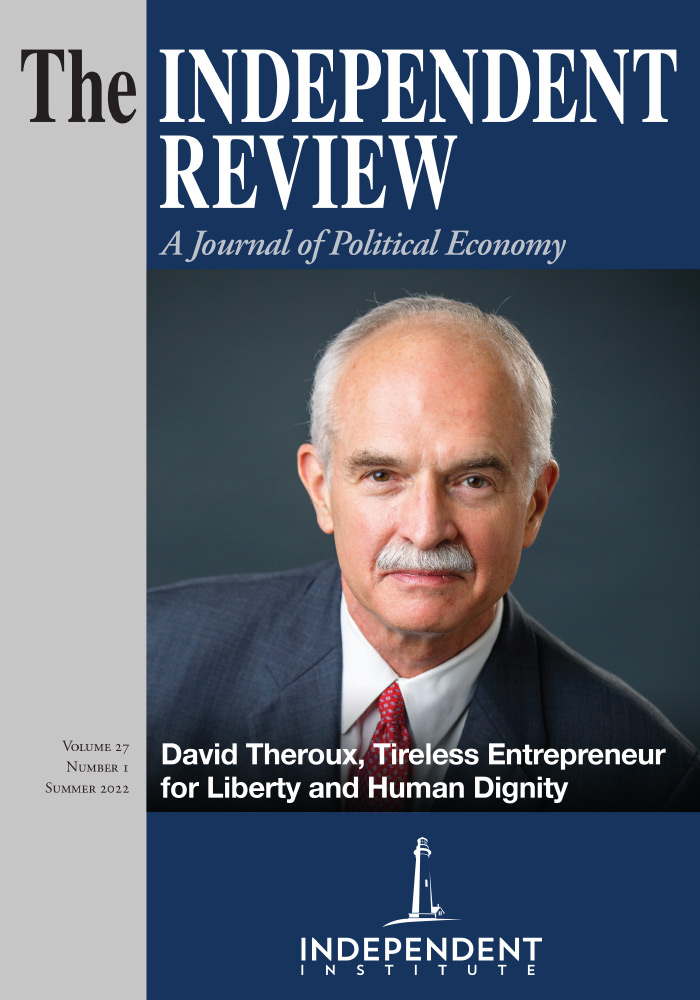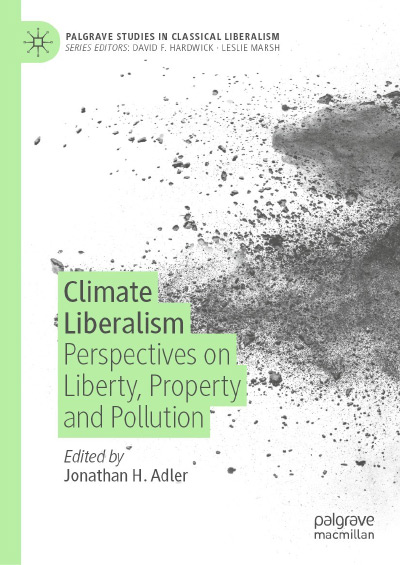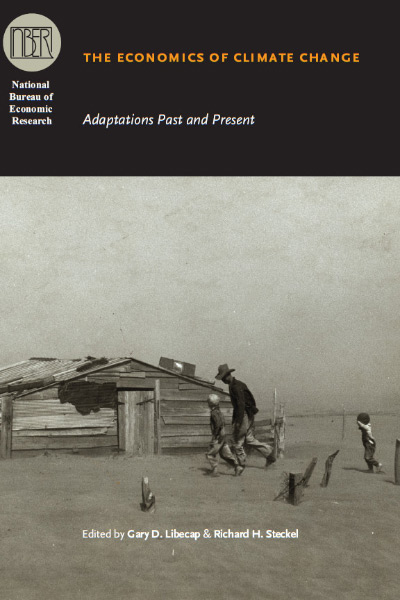“The first time I heard about solar geoengineering”—the idea of a large-scale effort to reflect more solar radiation into space and thereby cool the earth—“I considered the idea nuts. It is” (p. 1). Those are the opening sentences of Geoengineering: The Gamble by Gernot Wagner, former senior economist at the Environmental Defense Fund, currently a faculty member at New York University.
Despite insisting that the idea is nuts, however, Wagner firmly embraces it. His central idea is that solar geoengineering—likely done by releasing sulfur dioxide into the stratosphere—is inevitable. It’s not a question of “if” but “when.” His other central idea is that the readers of his book will only take him seriously if he pushes the idea with logical scientific ideas but then contradicts himself by saying that the idea is crazy. His readers, like him, must protest loudly and lament unceasingly when they do the inevitable, because otherwise their worldview will collapse. To understand his point of view, let’s begin with “not if, but when.”
If you fear that use of fossil fuels and ever-increasing levels of greenhouse gasses in the atmosphere will cause the planet to get too hot, “solar geoengineering turns everything” you think you know “about climate change and climate policy on its head” (p. 15), because it is a “fast” and “cheap”—though “imperfect”—way to solve the problem (p. 8). “Fast means that solar geoengineering, fully deployed, could help lower global average temperatures within weeks and months—rather than the years and decades that it would take for CO2 reductions. . . .Cheap is relative, but most estimates put the direct engineering costs for deploying stratospheric aerosols at a scale somewhere in the single-digit billions of dollars per year” (p. 9, emphasis in the original). For about one dollar per person per year solar geoengineering could do away with global warming. “That’s not exactly free, but it might as well be” (p. 9), observes Wagner.
What could go wrong? Wagner addresses twenty concerns of climate scientist Alan Robock, arguing that all-in-all they aren’t likely to be much of a problem. These include impacts on regional climate, ocean acidification, ozone depletion, and plants’ productivity (most plants prefer undiffused light). The biggest problem, as he sees it, is the “mitigation deterrence” problem: if this insurance is available, we won’t do as much to solve the problem in more conventional ways. In other words, because solar geoengineering is available, we’ll do less to reduce the use of fossil fuels, which cools the planet at a cost that is one hundred to one thousand times more expensive than using solar geoengineering.
Framed this way, solar geoengineering won’t strike many readers as an actual problem and “mitigation deterrence” seems like a non-issue. Few will agree that solar geoengineering is “nuts.” But there are two ultimate reasons it might be a crazy idea, as Wagner sees it. The second of these is that someone may find a way to abuse it. This point is well taken. Far more important in Wagner’s way of thinking, however, is that he and his allies consider the use of fossil fuels to be downright sinful. If so, solar geoengineering will let people continue sinning without any punishment. Wagner doesn’t use the word “sin,” but it must be what he means, because if we use a more neutral term—such as “unhealthy”—the entire case falls apart. Let’s rephrase the issue in terms of health: Wagner seems to worry that solar geoengineering will allow people to do something that’s inherently bad for the health of the planet, but without the planet and the people living on it suffering any major symptoms. That seems like an odd worry. How is the behavior “unhealthy” if it doesn’t cause health problems? An analogy might be overeating. Carrying around excessive weight is generally unhealthy. But suppose a pharmaceutical company discovered a “technofix” so that you can have your cake and eat it too—be overweight without reducing your life expectancy or suffering important health problems. Wouldn’t the new technology change the very definition of “overweight”? Perhaps solar geoengineering should be seen as the equivalent of fluoridated water, which allows you to eat a lot of unhealthy candy and not have your teeth fall out. It strikes me that Wagner’s real worry may be that solar geoengineering risks a return to the days when greenhouse gases weren’t considered to be pollutants. Then what would we have to worry about? War, pestilence, poverty, inequality, and moral decline, but not climate change. What a shame!
In arguing “not if, but when,” Wagner sketches three possible futures. In the first progressives like him take the helm, spending trillions of dollars on high-efficiency, low-carbon projects across the globe. Emissions levels fall but mitigation efforts take time, and the globe continues to warm. As the climate deteriorates, there’s an international consensus that solar geoengineering is needed to bolster mitigation, which simply isn’t up to the task. In the second scenario, efforts to reduce GHG emissions sputter, the globe warms rapidly and governments from the hottest countries lying near the equator—such as the Philippines, Brazil, and Australia—take matters into their own hands, unilaterally deploying solar geoengineering. In the third scenario, millions of geoengineers take matters into their own hands without governments needing to act. They begin an uncoordinated campaign (covert at first) of smaller releases of sulfur dioxide into the upper atmosphere to increase the earth’s reflectivity. “What if the deployment decision was entirely out of the hands of elected officials?” he asks (p. 109 – 10) and warns that, like drug smuggling, it would be unstoppable to a degree. One way or the other, he concludes, it’s not a matter of “if” but “when” someone begins solar geoengineering. Because of this inevitability, Wagner argues that significantly more research is needed, and we need to begin thinking about international governance rules for solar geoengineering. “The worst possible outcome would be to slither into eventual deployment without sufficient knowledge to steer, or perhaps stop inappropriate deployment before it is too late” (p. 89).
I will offer a fourth scenario: Greenhouse gas emissions reach a peak and begin to decline as global population crests and then falls (see Jesus Fernandez-Villaverde, 2021, “The Demographic Future of Humanity: The Trends,” The Public Discourse), progress continues in developing energy efficient technologies, and the relative price of substitutes for fossil fuels falls. As emissions decline, the concentrations of GHGs rise more slowly than standard projections and temperatures rise much more slowly than many fear. People all over the world adapt to the modest changes in the climate and the catastrophes Wagner envisions never appear. In this scenario solar geoengineering is held in reserve but is never used. Wagner would reject this fourth scenario. After all, he claims that “people are dying from unmitigated climate change today!” (p. 144). But if that is correct, shouldn’t solar geoengineering begin immediately?
Throughout the volume Wagner walks a tightrope. His argument is verboten to most of his intended progressive audience (“I realize that I’m preaching to the choir here” (p. 132)), so he has to prove his bona fides by sneering at Donald Trump and the right and saying he believes all the progressive creeds—including “systemic racism” and rampant inequality (p. 121). But at the end of the day, someone on the right will hear him saying “solar geoengineering is an inexpensive solution to the problems you fear, so we don’t need to take the extremely expensive route of decarbonizing the economy.” Meanwhile, almost everyone on the left will react by saying: “You’ve sold us out! You warn of the moral hazard problem—that merely talking about solar geoengineering will undercut efforts to decarbonize the economy. You are the moral hazard problem!” Wagner parries this by claiming that discussing solar geoengineering will do the opposite—that it will make people realize how dire the situation is, so they will increase their efforts to reduce greenhouse gas emissions. I doubt, however, that many people on either side will see it this way.
| Other Independent Review articles by Robert M. Whaples | ||
| Spring 2025 | Millennials, Gen Zs, Capitalism, Socialism, and Confusion | |
| Spring 2025 | Not Stolen: The Truth about European Colonialism in the New World | |
| Spring 2025 | Green Breakdown: The Coming Renewable Energy Failure | |
| [View All (106)] | ||


















